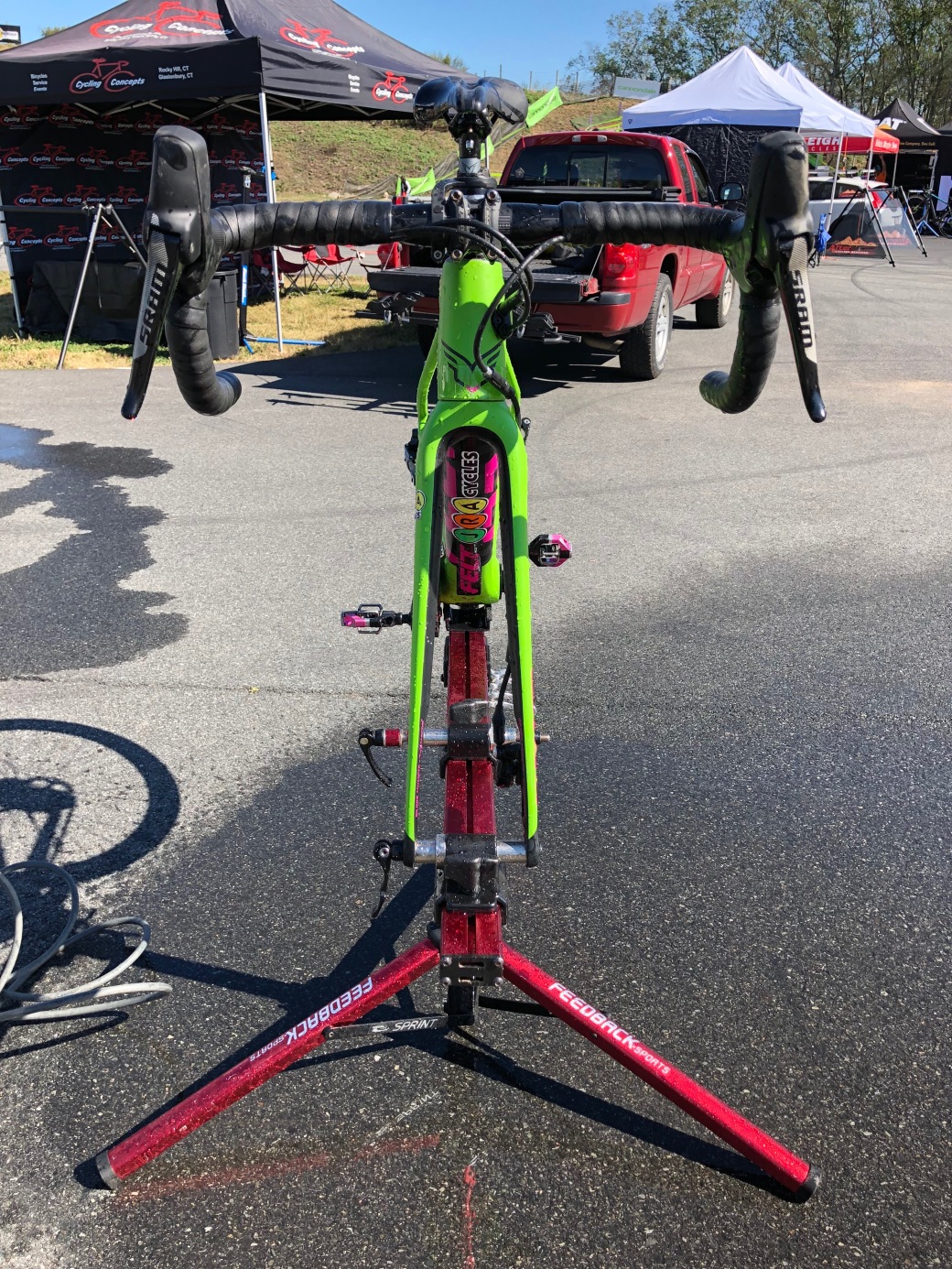Shhh nobody tell Cannondale I took pictures of their secret pro tool.
Okay really though it was Gary who noticed and pointed it out. If I wasn’t allowed to photograph and post about this, blame him.
At Charm City Cross we landed a sweet tent spot in the #prozone next to the Cannondale Cyclocrossworld team. This is a cool spot because you basically get to watch a parade of mechanics wash what seems like one million bicycles, roughly every five minutes for an entire day.
They say necessity is the mother of invention, right? Gary noticed they had a stand able to hold a complete bike for washing, with a plastic arm to grab the chain- and seat-stays so that the bike doesn’t move.
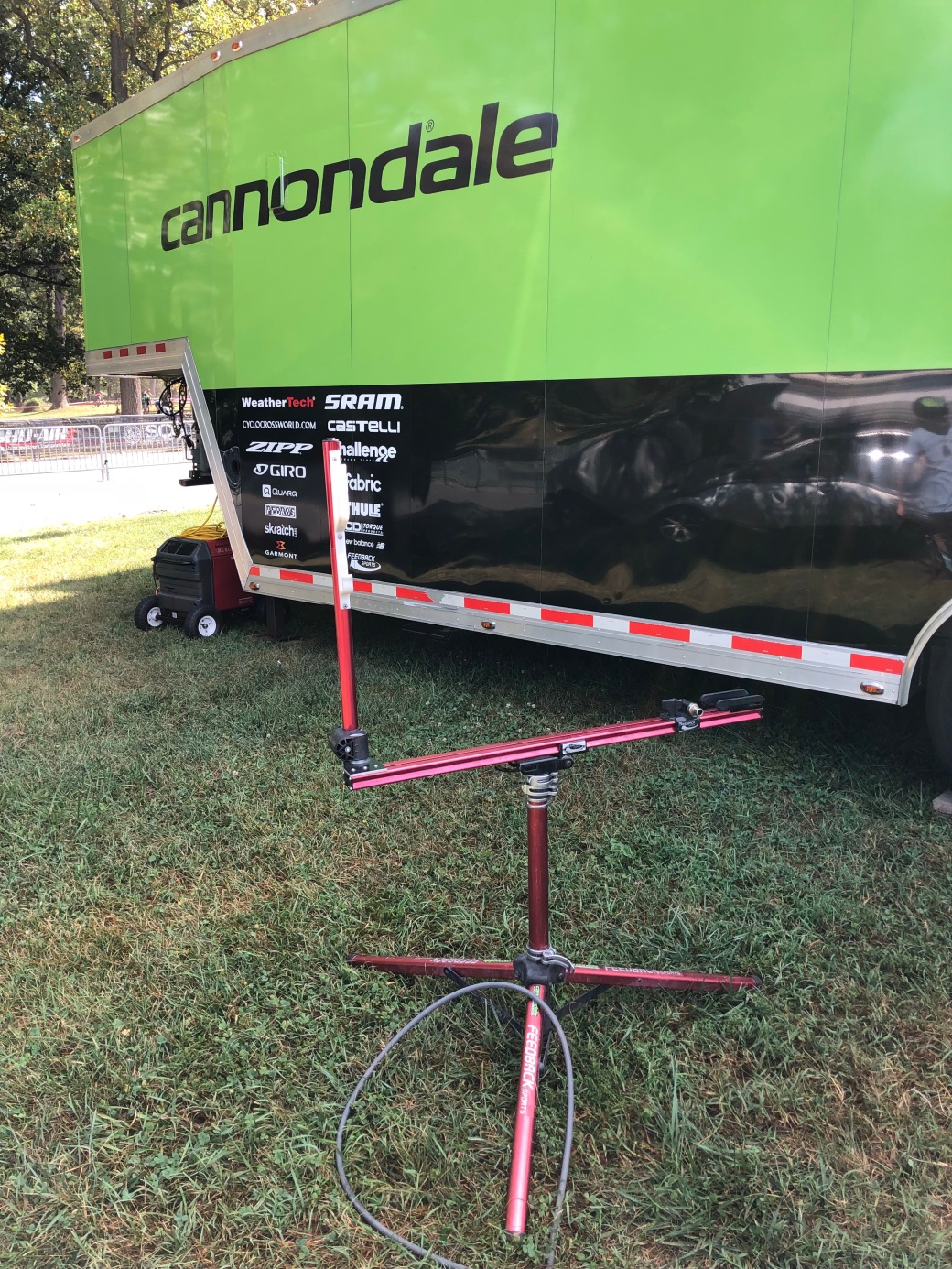
The regular Feedback sprint stand isn’t long enough for a complete bike, regardless of rear end attachment mechanism, so it’s clear they’ve started with a custom extra-long tray. The rear-end vertical piece looks to be a truing stand bolted into the tray, with some kind of fashioned plastic bit to hold the bike. I didn’t creepily photograph the mechanics washing the bikes, but I did find an action shot on the internets.
Look, the bike stays upright, without moving, in this jig while the mechanic powerwashes it! My further creeping estimates that the Cannondale operation is responsible for ~20-40 race bikes on a given weekend. Assuming they’re washed after practice laps, before, and after races, we’re probably talking about 4-5 washes/day per A bike, plus a few more for B (or C,D,E bikes as the case may be) bikes.
The unmodified sprint stand has a fork mount, so the bike goes on with only a rear wheel. Let’s suppose it takes 20 seconds to unscrew a thru axle and remove the front wheel, and another 10 to secure the wheel-off bike in the stand. The custom mod saves ~30 seconds/bike/wash, plus the immeasurable potential annoyance of straightening rotors because the front wheel tipped over while it was off the bike (this can’t only happen to me). Rough math, 25 bikes washed 4x/day at 30 seconds per… that’s 50 minutes of savings just from keeping the front wheel on.
Naturally Gary saw this and wanted one. My poking around tells me there’s no way to get the extra long tray stand. SORRY Gary. But really, something like this would have an even higher per-bike time savings for a team like ours. Gary’s responsible for eight bikes every weekend. Seven of them are thru-axle, one of them is quick release. He has two of these stands from his #pro days with Astellas, so he cannibalized one stand to put an additional fork mount on the second. This way he doesn’t have to change end-caps to wash the QR bike. Even with that added efficiency, he’s still down 30 seconds/bike wash. Assuming he washes our bikes at the same rate – 4 bikes washed 4x/day costs 8 minutes, plus the pit bikes which we’ll estimate at 4 bikes washed 2x/day – another 4 minutes.
Despite our best attempts at cloning or CRISPR-ing (hi Leslie, I made a science reference!), Gary is still only one mechanic responsible for four riders. Time savings and efficiency become exponentially more valuable as the rider:mechanic ratio goes up. Gary has to think about washing each bike, running through the gears, getting pit bikes and wheels to the pit, and us to the start line before every race. A tool like this has tangible value. Here’s hoping it comes available to the rest of the world someday.
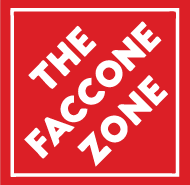
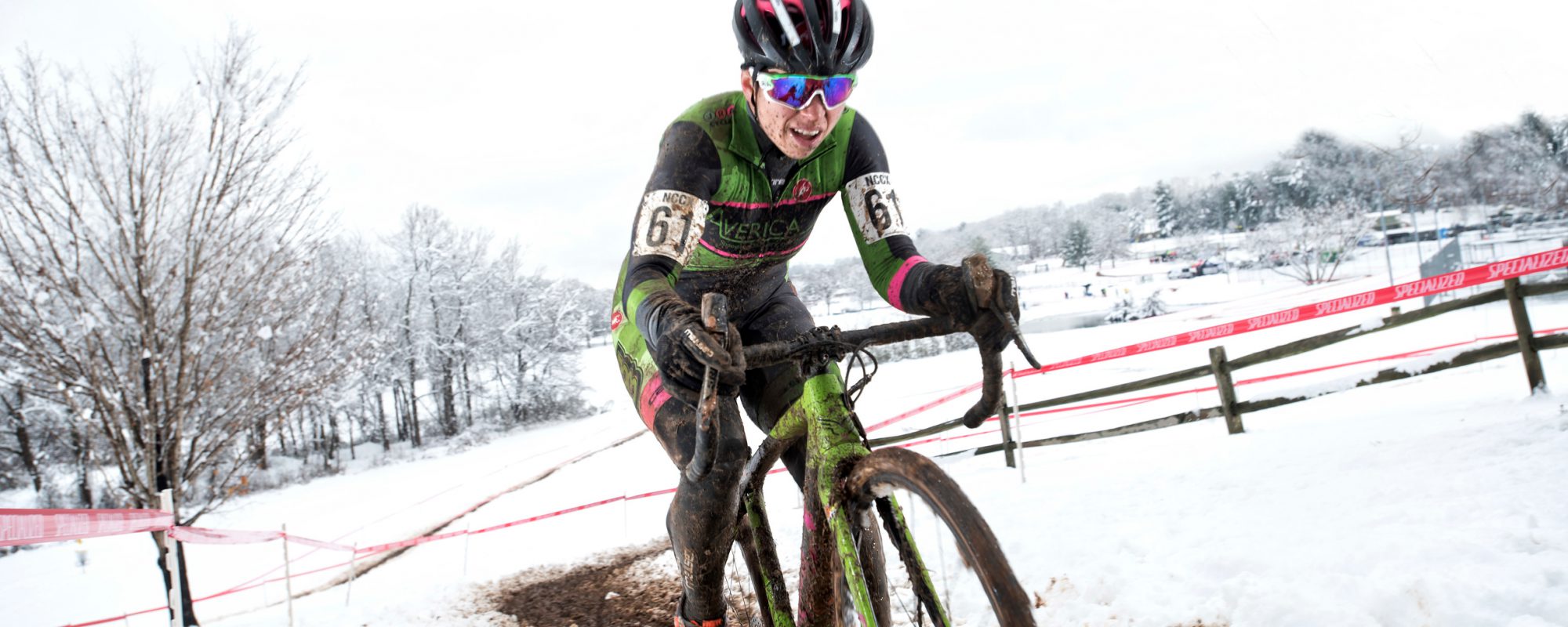
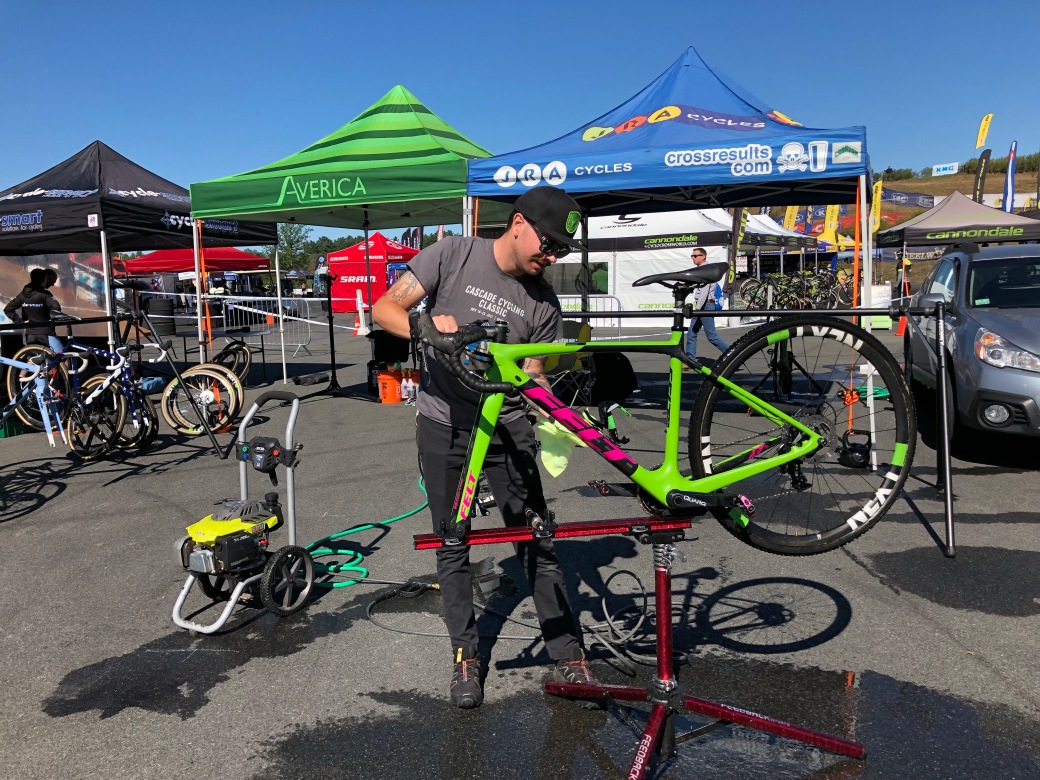
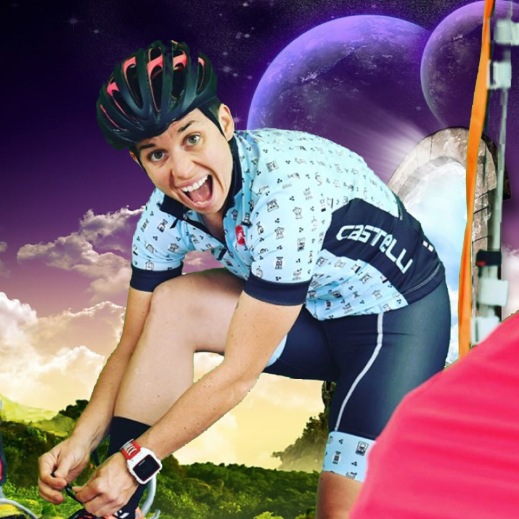


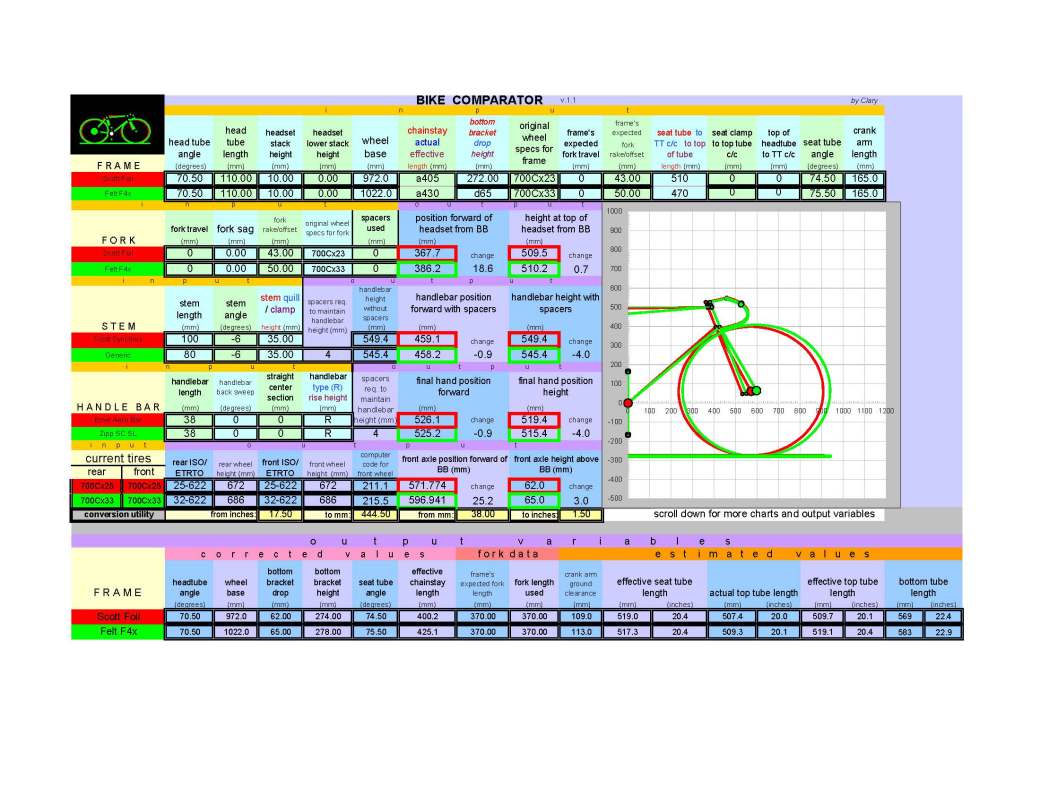
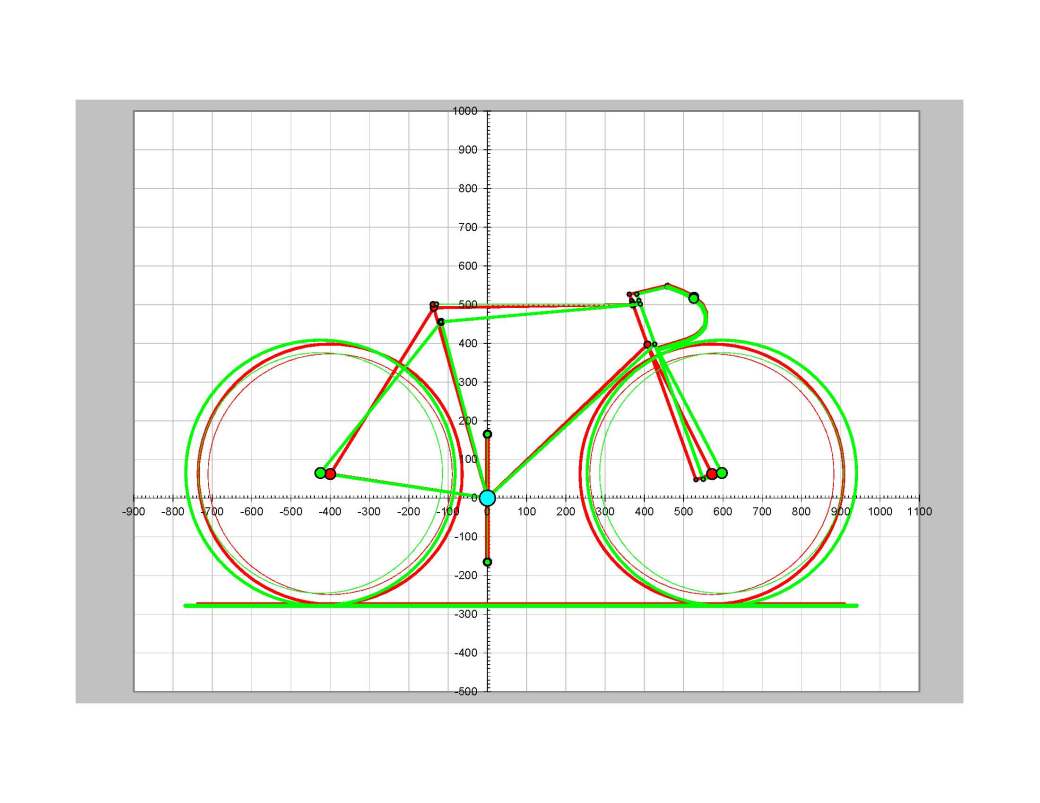 The Felt (Green) is a bit longer than my road bike, but otherwise offered a spot on fit transfer. Note the handlebars – the Felt frame is a bit longer (as they are known for being), but with a 1cm shorter stem than stock I could get my hoods in the exact same position as my road bike.
The Felt (Green) is a bit longer than my road bike, but otherwise offered a spot on fit transfer. Note the handlebars – the Felt frame is a bit longer (as they are known for being), but with a 1cm shorter stem than stock I could get my hoods in the exact same position as my road bike.